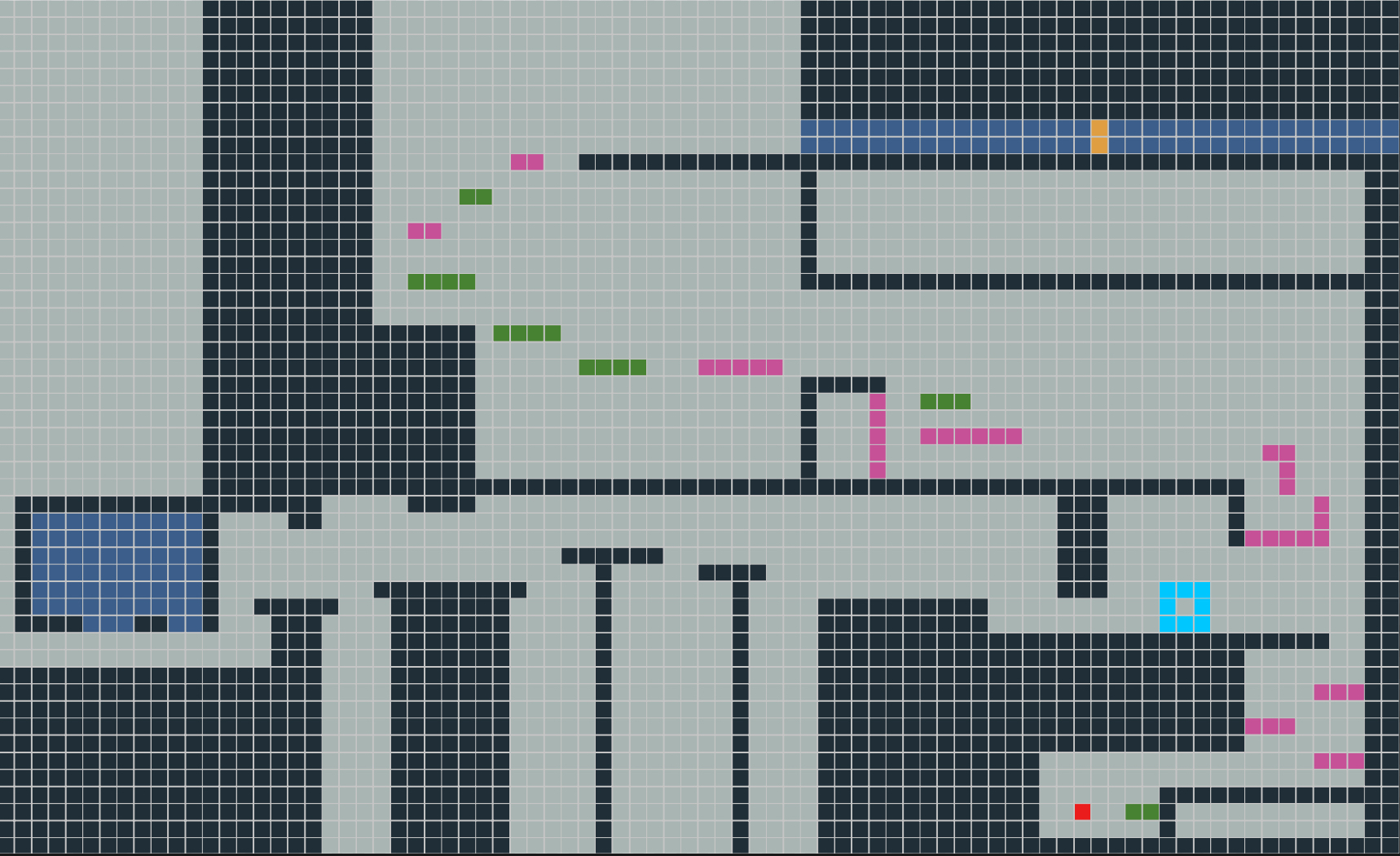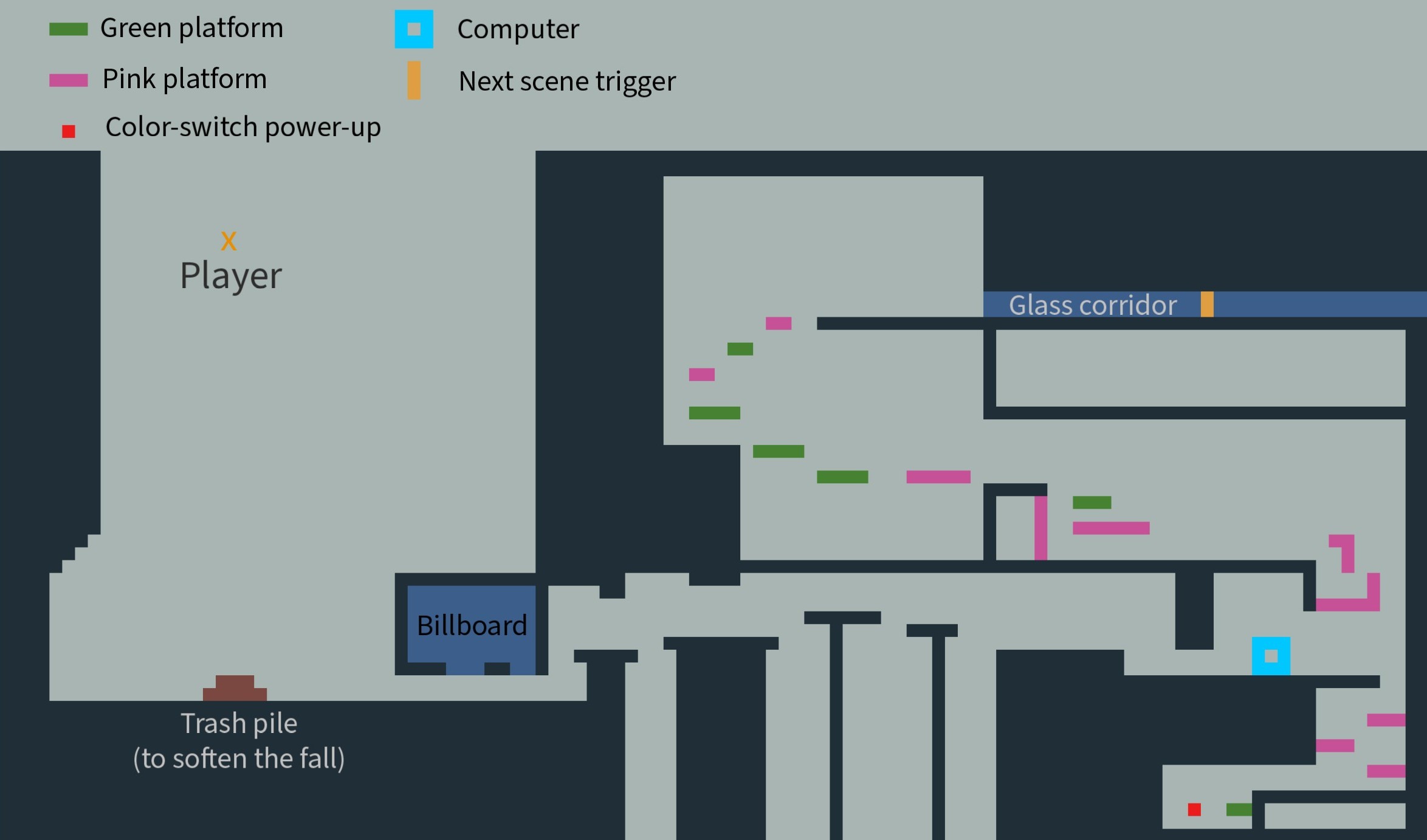Main Role:
Game designer
Programmer
Project Duration:
10 weeks
5 hours/week
+~50 hours polishing
(approx. 100 hours in total)
Tools Used:
Unity
Blender
Krita
Overview
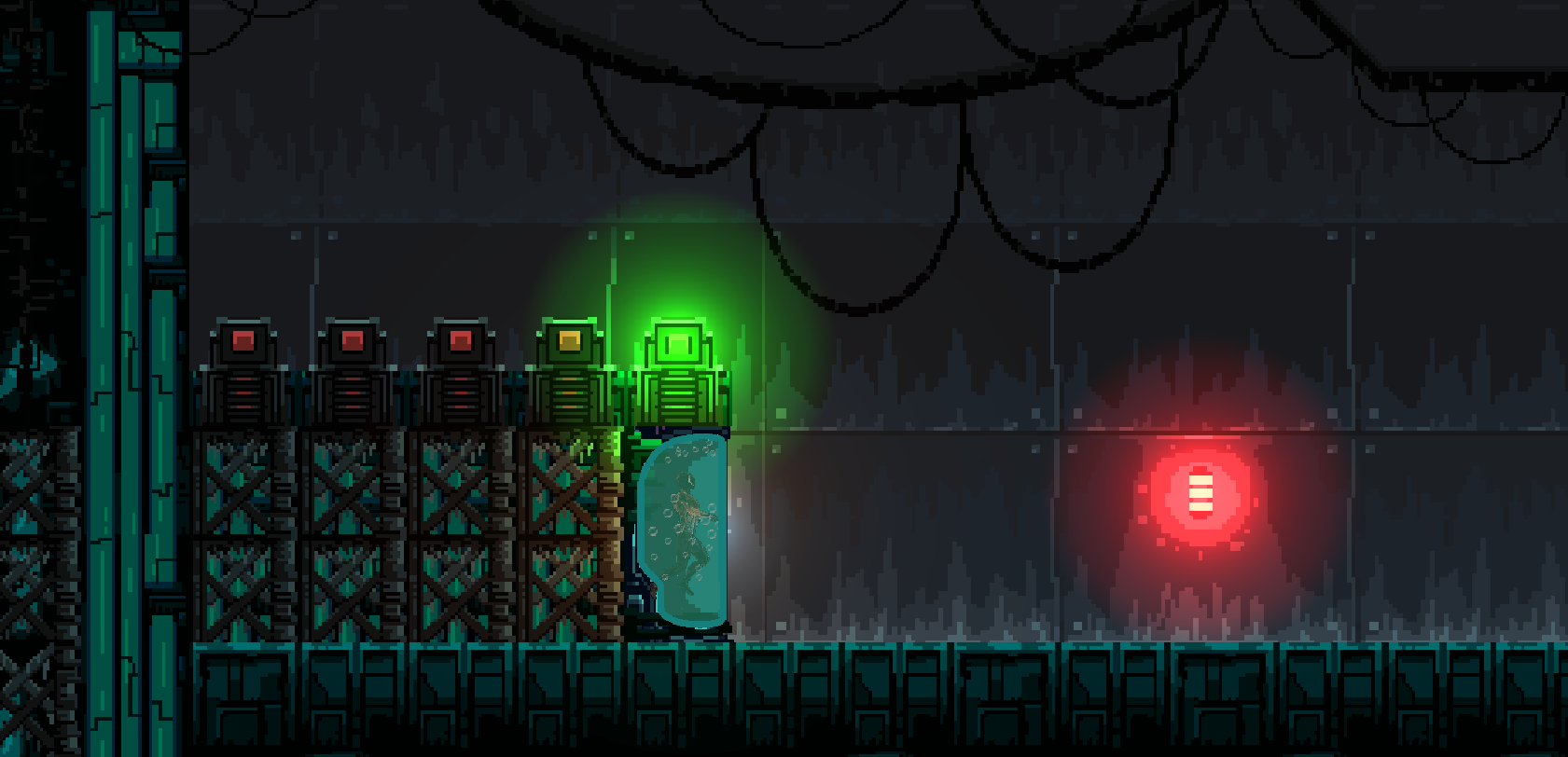
Colotron started as a university project for a programming course, and it was my first attempt at coding a game completely on my own. The main gimmick of the game is that the player can change the avatar’s color and can only interact with platforms and objects of the same color.
Metrics and Level Design
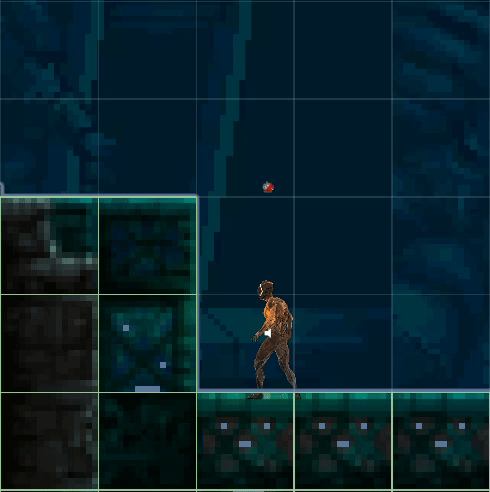
Jump height: 2 pixels = 2 cells
Before designing the levels, I defined core movement metrics like run speed, jump height/distance and dash duration. I then created pixel maps where each pixel represented one grid cell. This made it easy to translate the designs directly into the engine and ensured that the in-game movement would match my planning exactly.
In the examples shown below, the player’s goal is to reach the color-switching ability, which is required to progress. I designed the space so players can see and attempt to interact with colored platforms before unlocking the ability, but they’ll fall through them. My intention was to set up a moment of realization once the ability is acquired and suddenly players are able to interact with the environment in a new way.
From there, I gradually scaled the difficulty by introducing mechanics one at a time, starting with simple single-color platforming, then adding wall jumps, and eventually requiring mid-air color-switching.
Gating and teaching mechanics
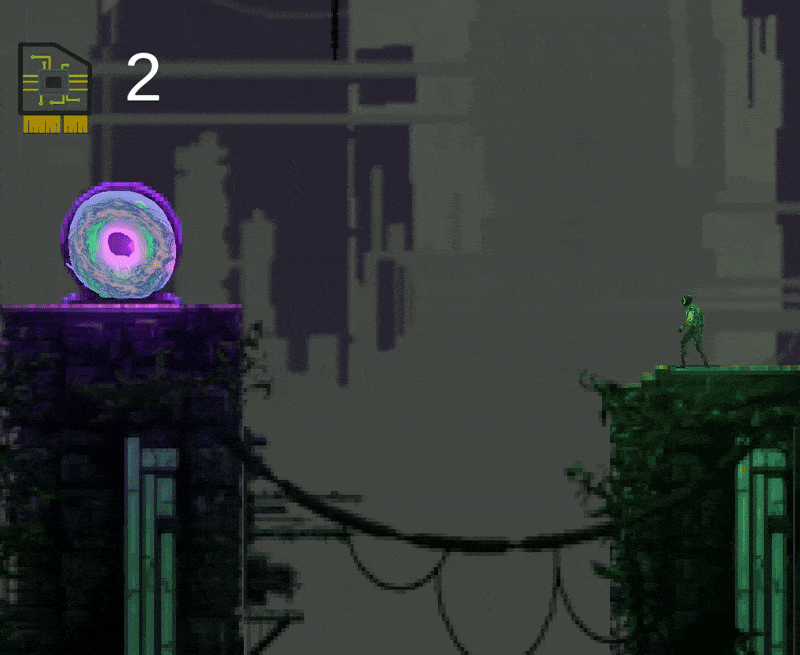
I gated progression behind abilities so players must unlock skills to advance. Here’s an example with the dash ability. Early in the level, players see a portal, their objective, but it’s just out of reach. The gap is too wide to jump across, making it clear it’s not a skill issue on their part.
To proceed, players explore the level and eventually reach the dash ability. From there, it’s impossible to backtrack the way they came from, so they must follow a new route that requires the use of dashing. Early gaps have safety platforms underneath, so it’s easy to try again, and the rest of the jumps are increasingly more difficult. By the time they reach the portal, players have mastered dash-jumping and can confidently complete the final challenge.
Technical aspects
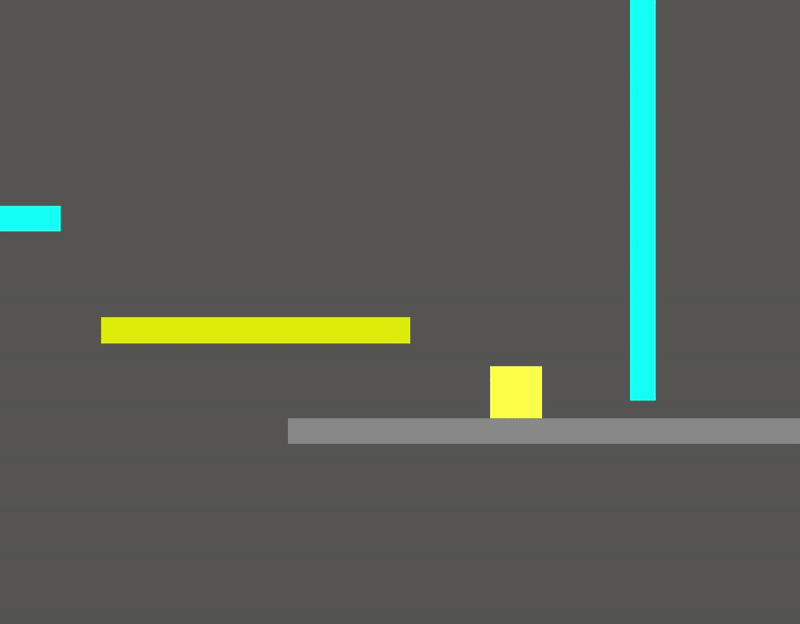
I built Colotron in Unity using C# with a tilemap grid system to design the levels. I rendered the player character’s sprite and animations from an isometric side view in Blender, and I added outlines in post-processing to better suit the visual aesthetic of the tileset I was using.
I used collision layers to manage interactions between the player and platforms. Each platform type is assigned a specific layer, allowing the player to collide only with matching colors.
